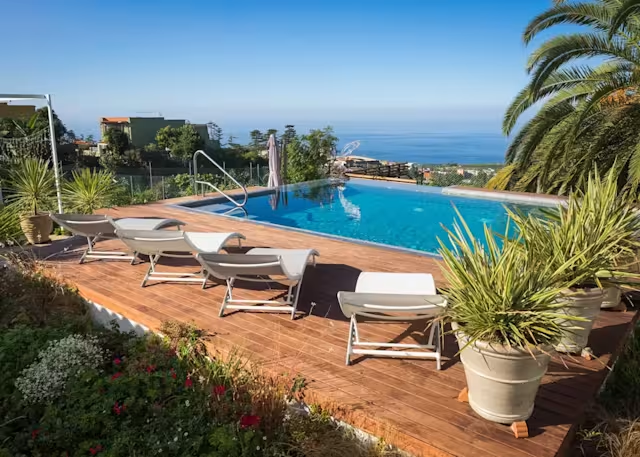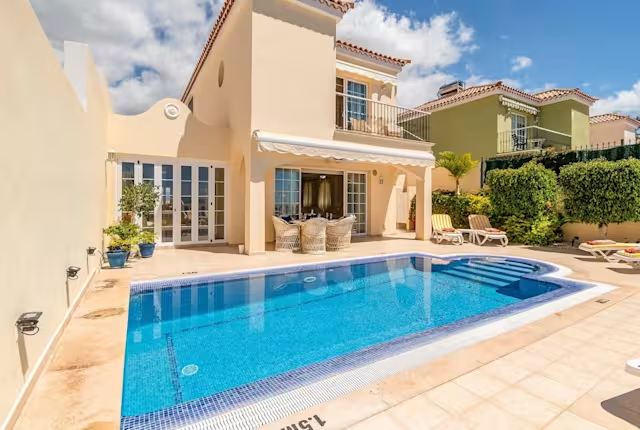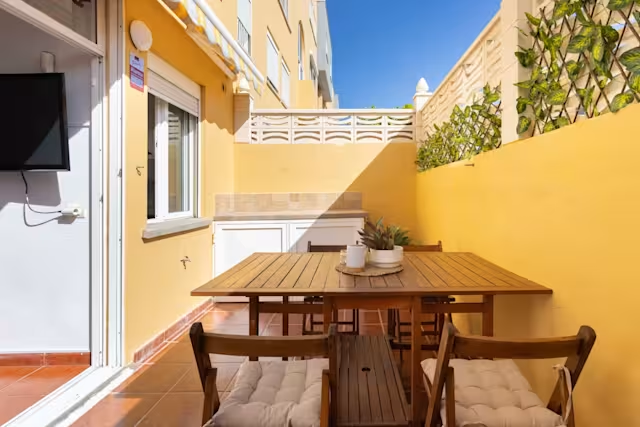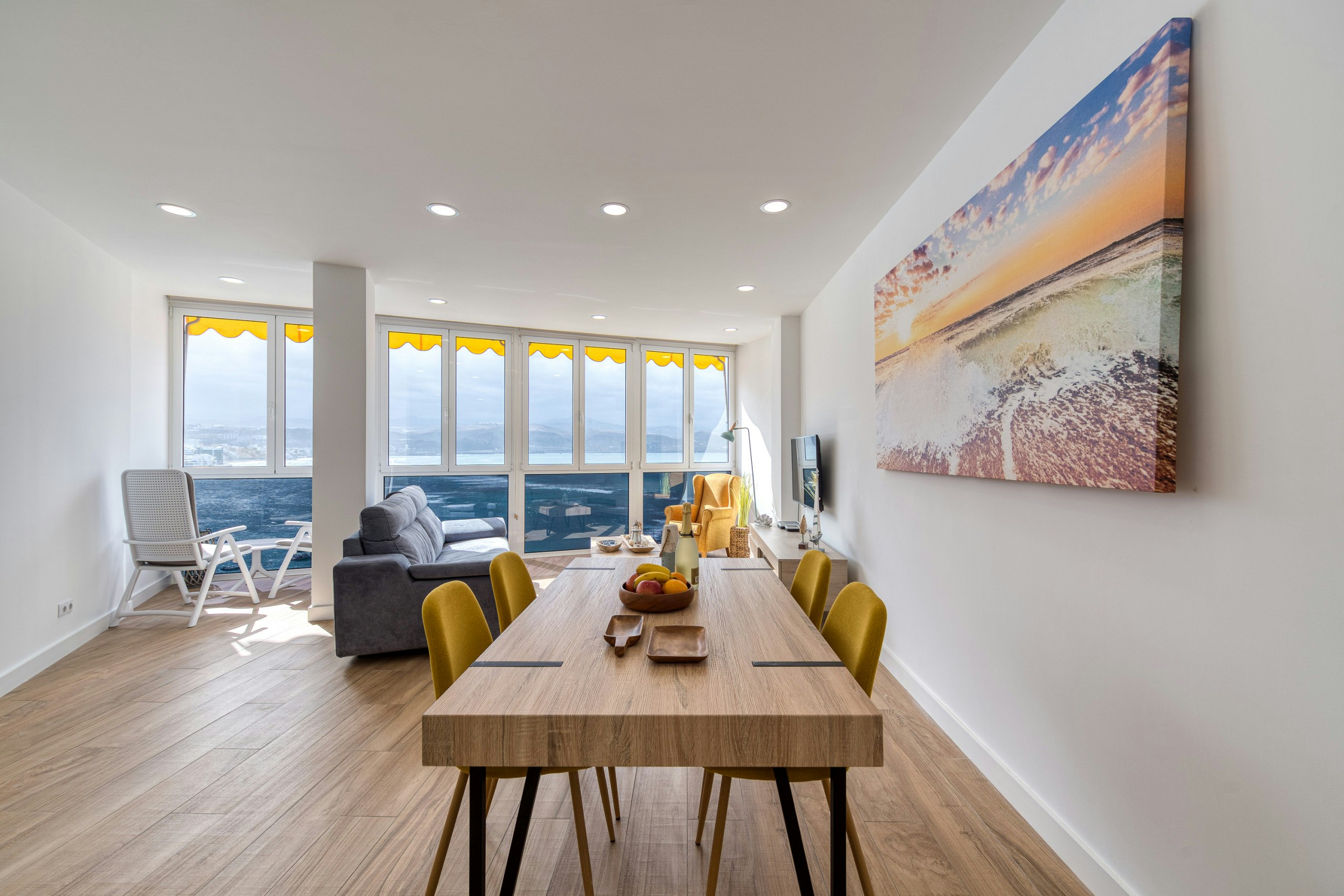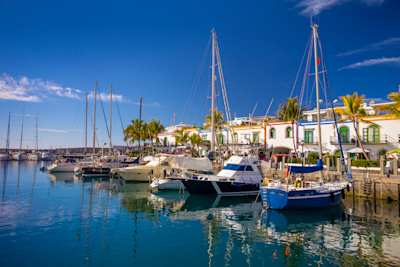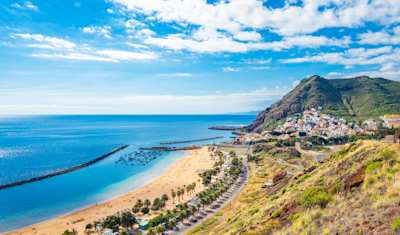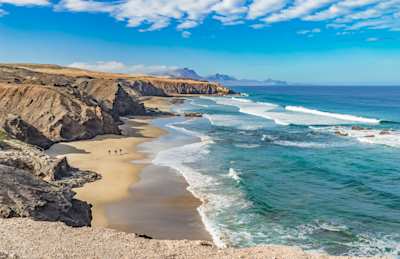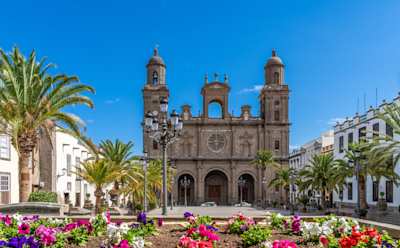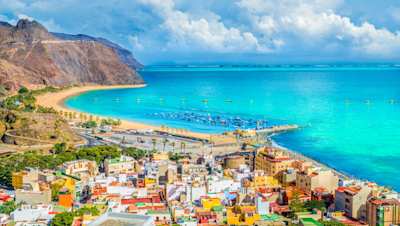A Blissful Escape in the Sun: An Expert Travel Guide to Tenerife
Planning an island getaway? Here’s everything you need to know about this dreamy destination
~
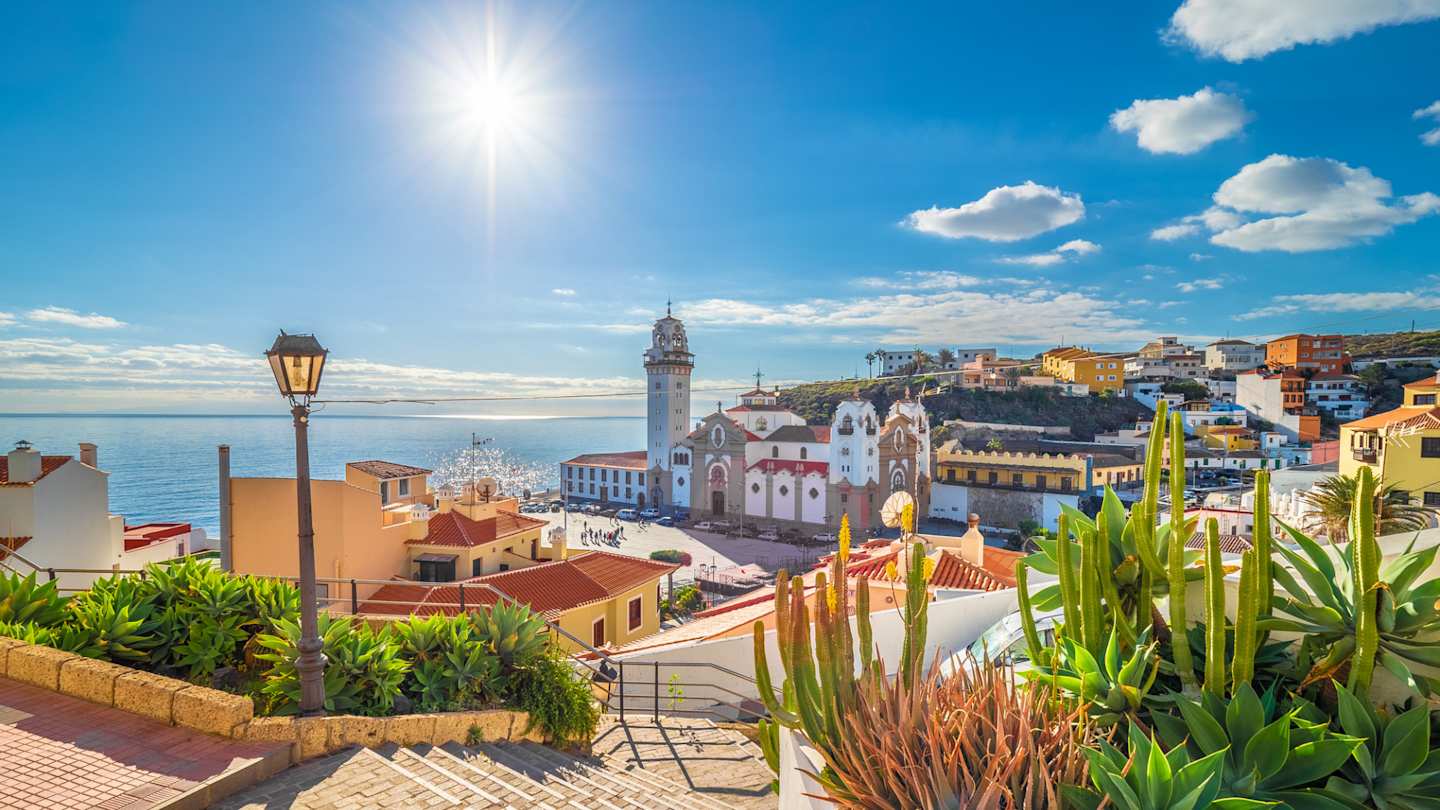
Made up of volcanic landscapes, beautiful beaches and an enviable warm climate, there’s nowhere better than Tenerife for a sun-soaked holiday. When you’re not busy sunbathing or trekking in nature, there’s plenty to fill the downtime, thanks to a good mix of culture and history in its vibrant cities. The experts at Plum Guide understand all there is to know about travelling around the island. We're here to help you plan the perfect trip with our comprehensive travel guide to Tenerife.
General information about Tenerife
The largest of the Canary Islands, Tenerife has a rich and varied history dating back thousands of years. The very first inhabitants were the Guanches, a pre-Hispanic people believed to have arrived on the island around 200 BC. Christopher Columbus landed in Tenerife in 1492, and the Canary Islands were subsequently claimed by Spain. Fast-forward to 1977, the Canary Islands were granted autonomous status by the Spanish government.
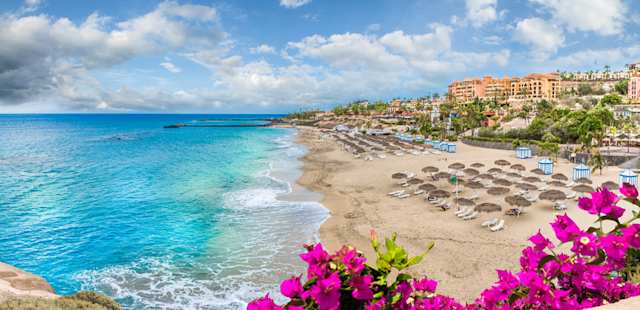
Lounge chairs with sun umbrellas facing the Atlantic Ocean on El Duque Beach, Tenerife
Best time to visit Tenerife
With its warm subtropical climate and high levels of sunshine all year, there’s never a bad time to visit Tenerife. Spring, summer and autumn are considered the best times for a beach break, as March through to October sees hot weather and sunshine. Winters are mild, and are best for exploring the island and paragliding.
How to get to Tenerife
Tenerife is the only Canary Island with two airports: Los Rodeos Airport in the north, and the Reina Sofía in the south which handles most of the island’s international traffic. You can also get to Tenerife by ferry from the southern coast of Spain.
Top activities and attractions
Beaches

Playa Las Teresitas's golden sands with palm trees and beach parasols, Tenerife
Tenerife is the ultimate beach destination, offering something for every kind of beach bum. One of the best beaches is Playa Las Teresitas, an arc of golden sand and palms backed by the magnificent Anaga Mountains. If you like your beach with a side of luxury, Playa del Duque offers fine, silky sands, crystal-clear waters and cabana beds. What we love about Tenerife is that you can still escape the crowds, with remote beaches like Playa de Benijo tucked away in lush and peaceful surroundings.
Jardín Botánico Puerto de la Cruz
One of the best attractions in the northern city of Puerto de la Cruz is its botanical garden. Established in the late 18th century, the gardens cover approximately 20,000 square metres and are home to magnificent plants native to the Canaries and from other parts of the world. Divided into several sections, it’s an idyllic place to spend a hot afternoon in the shade.
Garajonay National Park
While it’s located on La Gomera island, you can easily take a ferry from Tenerife to visit the Garajonay National Park. It covers the centre and north of the island and is well worth a trip. This densely forested area is home to rare laurel forests and deep gorges, all of which are waiting to be explored. There are many trails which you can take, leading you through truly breathtaking landscapes.
Hiking

Panoramic view of Roque Cinchado unique rock formation with Pico del Teide mountain volcano summit in the background, Tenerife
Those keen to get active on holiday have come to the right place, as Tenerife is a hiker’s paradise. There are trails for every ability, from leisurely coastal paths to more challenging climbs. One of the most popular hikes is the Pico del Teide, or the Mount Teide peak. It’s a difficult trek and takes about six hours, but the views are worth it. There’s also a cable car if you want to skip the trek entirely.
Wine tasting
Thanks to its volcanic soil and subtropical climate, it comes as no surprise that Tenerife is home to a selection of excellent vineyards. Most of the wine here is produced in centuries-old wineries, with five recognised wine-producing areas. One of Tenerife’s finest wineries is Reverón, where you can sample the vineyard’s wines and take a tour of its ancient cellars. Another must-visit is Bodegas Monje, a scenic winery in the shadow of Mount Teide.
Tenerife's hidden gems
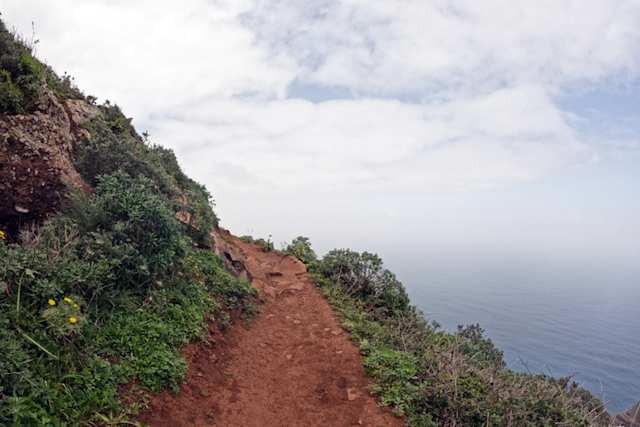
Viewpoint of the Atlantic Ocean on a cloudy day from the Mirador Aguaide's mountainous hiking path, Tenerife
What would a travel guide to Tenerife be without a few hidden gems? One of our favourite places to beat the crowds is the natural swimming pools of Los Abrigos – famous for its turquoise waters and sea views. For more spectacular landscapes, take an intriguing underground tour of the magical Cueva del Viento, the largest lava tube system in Europe.
If you prefer to stay above ground, head to the Mirador de Aguaide for one of the best viewpoints in Tenerife. Overlooking the Atlantic Ocean, this balcony on the edge of a 500-metre drop boasts views of La Punta del Hidalgo and Roque de Los Hermanos.
Best areas to visit and stay in Tenerife
Costa de Adeje
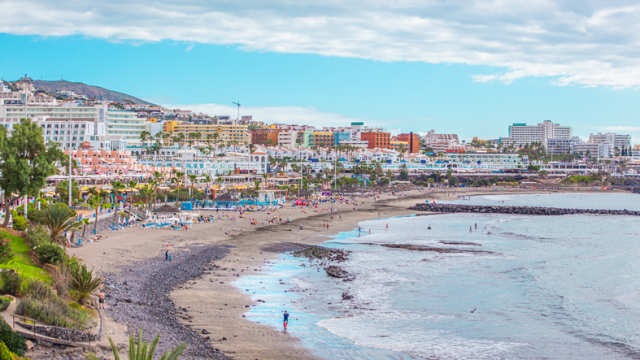
View of Costa Adeje Beach, Tenerife
If it’s your first time in Tenerife, the resort town of Costa Adeje is a great place to stay. Head to the amazing beaches of Fañabé and Torviscas, where you can ride the waves with watersports like jet skiing, parasailing and paddleboarding – or take it easy and relax on the sun loungers. There are even several top-notch golf courses should you fancy a change from beach days. For those travelling with little ones, splash about in water parks like Siam Park and Aqualand, or set off on a whale and dolphin watching excursion.
Santa Cruz de Tenerife
Want to be in the heart of the action? Tenerife’s capital city of Santa Cruz de Tenerife is a lively place with a rich culture and history waiting to be discovered. We highly recommend visiting in February when the famous Carnival of Santa Cruz de Tenerife takes over the city. There’s also plenty to do when it’s not carnival season, such as popping into the museums and art galleries like Museo de la Naturaleza y el Hombre, or catching a show at the Auditorio de Tenerife.
La Laguna
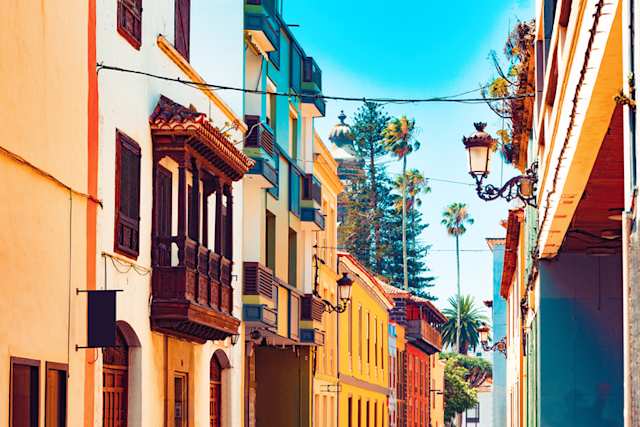
Colourful yellow houses with traditional balconies in La laguna village, Tenerife
The prettiest town on the island is San Cristóbal de La Laguna, also known as La Laguna. Once the capital of Tenerife, this town is known for its striking buildings, which blend together mudéjar, neoclassical, modernist, rationalist and contemporary architecture styles. Wander the cobbled streets and admire the colourful abodes, taking a moment to catch your breath in the Plaza del Adelantado, a picturesque square with a pretty fountain. Located between the Anaga Mountains and the slopes of La Esperanza, La Laguna is an ideal base for outdoor adventures.
Los Gigantes
Those seeking a tranquil escape should head to Los Gigantes. Named after the towering sea cliffs that rise to 800 metres, this seaside town is the best place to experience a slower pace of life. It has a more authentic feel compared with other towns on the island, with days here consisting of hiking the cliffs and surrounding countryside, scuba diving or unwinding on Playa de La Arena or Los Guíos Beach. To venture further out, hike through the nearby Masca Valley all the way to the beach, where you can take a boat trip back to Los Gigantes.
El Medano

Views of El Medano and the Atlantic Ocean from the top of Montana Roja, Tenerife
The bohemian beach town of El Medano is a lovely, laid-back spot ideal for those who want to enjoy the south’s sunny climate while avoiding the party crowds. Its golden beaches attract surfers, kitesurfers and windsurfers, with a handful of schools where you can pick up lessons. Stretching for 2 kilometres, Playa El Medano is Tenerife’s longest natural beach. It boasts incredible views, including Montana Roja, a 171-metre-high inactive volcano jutting out to sea – be sure to take a hike up here with your camera.
Eating out in Tenerife
Food is an important part of any travelling, so we couldn’t leave it off our travel guide to Tenerife. Located between three continents, the cuisine of the Canary Islands is a real melting pot. The archipelago played a major role in trade between Europe, Africa and the New World, bringing in ingredients like spices and various crops. Naturally, seafood is a major part of Tenerife’s local cuisine. With its fertile volcanic soil, the produce grown on the island is of such high quality that they don’t need much flavour enhancement.

Roasted rabbit in a Canarian marinade (Conejo al Salmorejo), served with red wine and crusty baguette, Tenerife
Local delicacies
Local delicacies to make note of include papas arrugadas (boiled potatoes served with a chilli pepper garlic sauce called mojo rojo), pulpo a la Canaria (octopus and potatoes in a spicy sauce of garlic, chillies and Jerez vinegar), and ropa vieja (a stew made with chickpeas, meat, onion and potatoes). Another popular dish is sancocho Canario, a salted fish stew with sweet potatoes, olive oil and parsley, served with mojo sauce and gofio (a flour made from roasted grains). For something a little different, try Conejo al Salmorejo. Mostly served in the mountains and rare to find on a restaurant menu, this humble dish is made of roasted rabbit in a Canarian marinade.
Where to find food
The food scene in Tenerife is excellent, so you won’t have any trouble finding somewhere to eat. From beach bars to farmers’ markets and high-end dining, there’s something for everyone. Having said that, one of the best places to eat in Tenerife are guanchines, local establishments where locally produced wine is served with homemade traditional dishes. These are a distinct feature of the Canary Islands, but you’ll find them more widespread in Tenerife.

